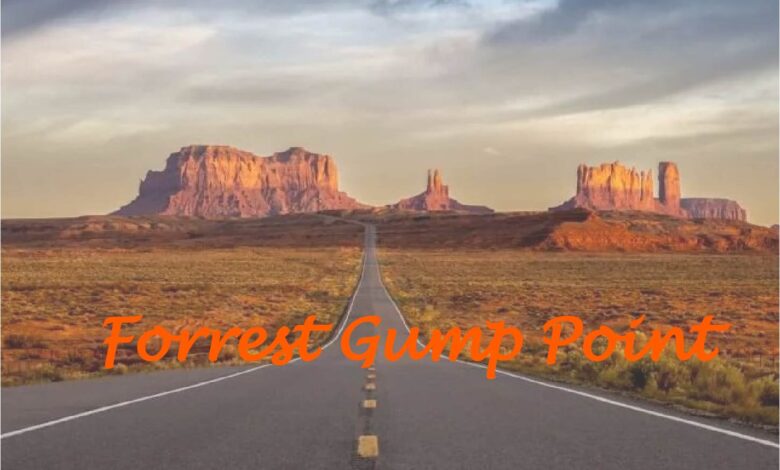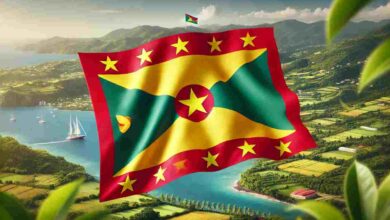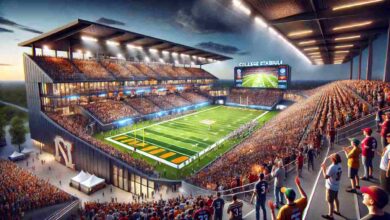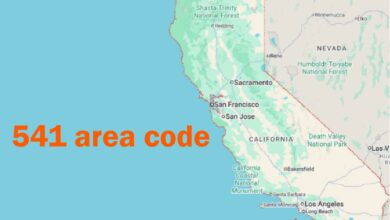Don’t Visit Forrest Gump Point Before Knowing This

Forrest Gump Point is a famous spot on Highway 163 in Utah, known from the movie Forrest Gump where he stops running. It offers amazing views of red rocks and mesas. Be careful when visiting since it’s on a busy road. The best time to go is early morning for photos. Pack water and sun protection, as there are no services nearby. It’s a must visit for movie fans and nature lovers.
What is Forrest Gump Point?
Forrest Gump Point is among the most picturesque stops along U.S. Route 163, snuggled within the grand Monument Valley of Utah. This is a place where Forrest Gump, in the movie with the same name as the title, surprisingly decided to end his three year run, “I’m tired. I think I’ll go home now.” This place has a dramatic view with giant red mesas and buttes, making this point one of the most scenic and symbolic places in the American Southwest.
Such settings merge cinematic nostalgia with breathtaking natural beauty, a fusion which can make the movie lover’s and adventurer’s hearts flutter. While many people are drawn by the urge to create this iconic movie scene, here are several things you should know to appreciate this place fully and stay safe during your visit.
How to Find Forrest Gump Point
Getting to Forrest Gump Point is a bit more difficult than it sounds, as any road signs do not point out the location. Although it sits on U.S. Highway 163, most use GPS or Google Maps by searching “Forrest Gump Hill.” The coordinates are 37°06’09.5″ N 109°59’21.1″ W, and it is about 12 miles north of Monument Valley Navajo Tribal Park.
Because it’s on a busy highway, visitors should be careful to be aware when stopping. The speed limit is reduced to 45 mph nearby, which hints that the area is nearby. Visitors should park in one of the small pull offs on the side of the road to avoid standing in the middle of the highway this bit of the highway gets traffic from RVs and trucks.
Best Time to Visit for Unforgettable Views
It’s a question of the best time for photographs or a peaceful visit. To see the most spectacular scenery, it is best to start around early mornings when the sunlight makes contrasting colors in the rock formations. Normally, between the mesas and the desert floor, the colors are quite vibrant. Sunrise will not only enhance the beauty of the view but it will also provide the least crowded conditions since few tourists are out that early.
By afternoon, the sun’s rays stretch over the valley, and this may disturb the photo. The other challenge that is accompanied by visiting in the evening is the issue of visibility due to the absence of streetlights, and it could be dangerous to walk along the highway. It does not matter at what time of the day one visits; one needs to take good care as the highway is still active during all the time.
Safety Considerations: Avoiding Common Pitfalls
It is a very attractive feeling to take the best photo in the middle of the road. Still, visitors should not leave their safety at any cost. Some accidents have taken place with travelers posing on the highway without checking for oncoming vehicles. It’s recommended to be vigilant and use the moments of clear traffic for photos.
However, the area around Forrest Gump Point is equally remote, with very few cell services and amenities within a short radius. Travelers will want to bring water, snacks, and sun protection especially in summer, when temperatures can be scalding hot. If you’re visiting during winter, make the most of layering, as it may get cold enough in the desert at night.
What to Pack and Prepare Before Visiting
Since Forrest Gump Point is really out in the middle of nowhere, near the Utah Arizona border, a little thoughtful preparation will make for your smoothest visit. This location has very few services, so any visitor should be prepared with plenty of supplies, including lots of water, snacks, sunscreen, and a first aid kit. Comfortable walking shoes are advised, since there are a number of parks within close proximity to the point, such as Goosenecks State Park and Monument Valley.
Layerable clothing will help you to be prepared for both the heat and cooler desert evening. Summers are hot smoldering, often in the upper 90°+ temperatures; winter can drop into the 20 °+ below zero. Bring a hat and sunglasses to protect you from the intense sun, which feels hotter at uncultivated elevation.
Nearby Attractions: Making the Most of Your Visit
Forrest Gump Point is not only a destination in its own right but is also close to numerous other magnificent attractions and hotspots. The nearest and most popular of the nearby sites is Monument Valley Navajo Tribal Park, further immersing travelers into the landscapes of the American Southwest. Travelers can see the scenery from viewpoints and experience Navajo culture within the park.
Another boxed set is Gooseneck State Park, an hour’s drive further on, where the San Juan River forms abrupt bends, somewhat like those made famous by Horseshoe Bend. Those with more time might want to explore this area for a less crowded but also spectacular experience: Valley of the Gods, with towering rock formations and beautiful driving routes.
Lodging Options: Where to Stay Overnight
Some may prefer to spend more time at Forrest Gump Point with their shoes off or wandering further into the surrounding lands. Monument Valley offers lodging with one of the best panoramic views in “The View” hotel, overlooking buttes and mesas on land settled thousands of years ago. Closer yet but slightly beyond the budgetary reach of even this range is Goulding’s Lodge, which offers accommodations and day long tours for guests.
Those who prefer camping will sleep near the stars at the adjacent Mitten View Campground, a site where you can camp underneath serene desert nights and awake to spectacular sunrises. Keep in mind though that these places are remote, so they offer limited service. Book accommodations early, particularly in the high tourist season, it is essential to reserve your accommodation.
Photography Tips: Capture the Perfect Shot
There is plenty to inspire photographers who visit Forrest Gump Point. The road to the site sets an attractive backdrop, like something from a classic western as its yellow centerlines roll over red desert rocks and through big blue skies. Experts (or guides) advise photographers to come in early morning when the light is softer and the shadows are not so sharp.
A tripod ensures that your camera is stable for sunrise shots, particularly if you intend to bracket exposures. Photographers that wish to get the entire scene in may elect for telephoto lenses as a way to compress detail and add some power packed formations in the background. Just make sure to brush the other tourists and cars out of your pictures, as this pit stop is on Route 163.
The Bottom Line
Forrest Gump Point is practically an institution in its own right and for photography buffs, the landmark is like gold dust. A unique combination of cinematic history and natural beauty, it is the perfect stopover for anyone traveling across the American Southwest. But, in order to get the most out of your journey, it is important that you prepare. Everything matters, from packing proper gear to when you come in and how careful you drive on the roads.
Whether you come to reenact a Forrest Gump scene or shut down the engine and take it in, this is where cinema connects with wild land. Situated near other natural wonders and lodging experiences found only in this part of the world, Forrest Gump Point will be one stop on any road trip through Utah and Arizona that quickly becomes a highlight.





